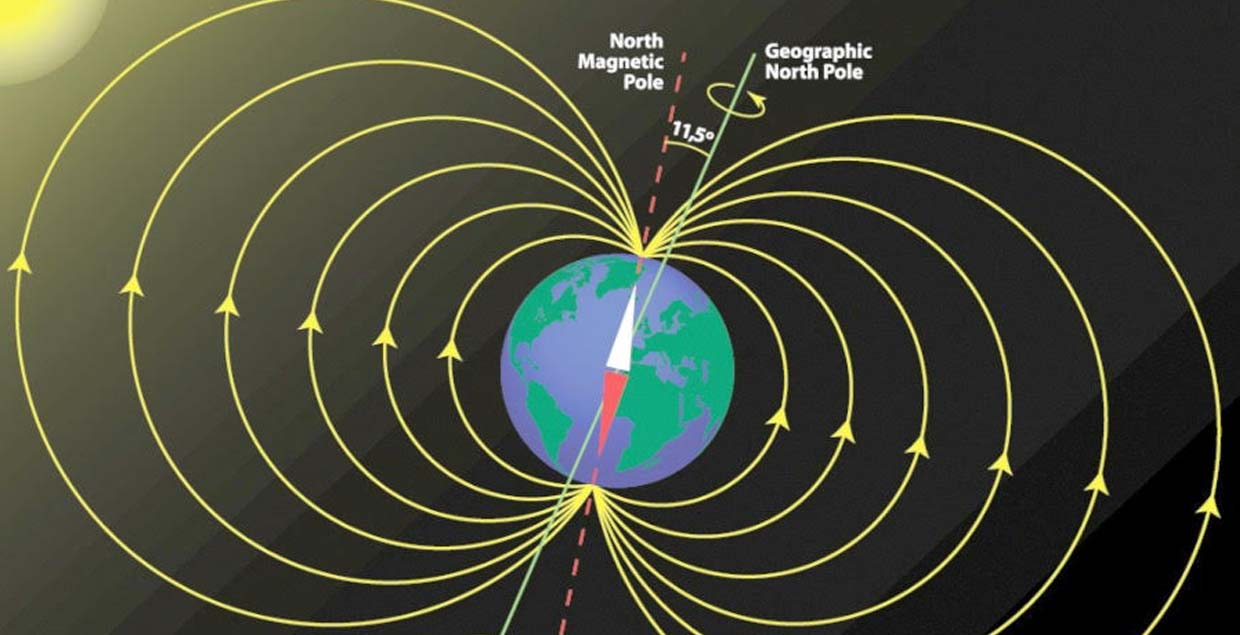If you are al all like me, you have been revisiting how to best present STEAM programming in the current COVID-19 environment. While every town has different levels of protocols in place, most in-person events have been put on hold, and while I have had a lot of success with some online events, I know young people are more engaged by hands-on activities. I have two opportunities I would like to share with you. CrowdMag is a free app developed by the National Oceanic and Atmospheric Administration (NOAA), available for iOS and Android devices. From the NOAA website, “…we explore whether the digital magnetometers built in modern mobile smartphones can be used as scientific instruments. Our goals are: To build, grow and foster a worldwide community of citizen scientists collecting field data and sharing it to further our understanding of the Earth’s magnetic field,” (sic)
The CrowdMag app is easy to use, features a built-in compass, colorful graphs, and only operates when you want to make a recording of your walk. I have found that students are very surprised at what causes certain increased levels when they make a recording. It has encouraged them to try a recording when walking their dog, riding a bike, or going somewhere new. There is even an e-mail feature, so my distanced participants can share their graphs with each other. This independent Citizen Science activity is flexible to work with students schedules, allows them to speculate at what is causing the rises and falls in the graphing data, and leads to great discussions when we virtually meet to talk about the data gathered so far. If you have students/families participate in a CrowdMag experiment, you can share with them that they will be operating with a magnetometer similar to those on robotic spacecraft exploring the planets and beyond, from Mariner to Voyager. More information at ngdc.noaa.gov.
Zooniverse.org is a Citizen Science platform that has launched over 250 projects to date. Data collection for some of these projects will skew from older students to adults. I have had middle school to high school age students participate so far. Registration is free, and participants work at their own pace and can analyze as much or as little data as works for their schedule. One of the features I really enjoy on zooniverse is the option for signing up to be notified about new projects. There are even beta-testing options on ideas that have not yet been approved for project status. The following is from a project currently under review at the zooniverse website, “Citizen ASAS-SN. Classify the light curves of variable stars and help us find the most unusual ones!”
“Variable stars consist of a few percent of all the stars and are crucial to our understanding of stellar astrophysics. The unusual variable stars that we hope to identify through Citizen ASAS-SN will likely change our understanding of these rare objects!”
I am currently participating in the beta-test, and so can you! It is really exciting to know you are working with (in this case) raw telescope data from all over the world. I like getting in on the beta tests, because it helps me see what questions may come up from future participants, and to see what tips and advice I can pick up for them by going through the data collection process. And if you don’t care for this potential experiment, you can browse all the current Citizen Science projects on their website to find one that better suits your needs.
So, I hope you can find some inspiration in these opportunities. They are a great way to engage participants with real scientific data, and the observations that they make will be shared with scientists and help contribute to the understanding of our world or the universe around us.





Leave A Comment